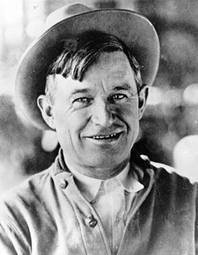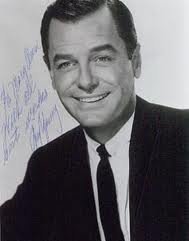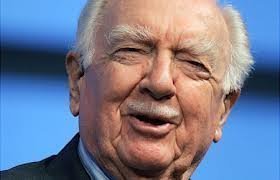The wild plant originates from the Paraná–Paraguay River drainages between southern Brazil and Paraguay. Little is known about its domestication, but it spread as a crop throughout South America. Archaeological evidence of use is found as far back as 1200 - 800 BC in Peru and 200BC - AD700 in Mexico, where it was cultivated by the Mayas and the Aztecs. By the late 1400s, cropped pineapple was widely distributed and a staple food of Native Americans. The first European to encounter the pineapple was Columbus, in Guadeloupe on 4 November 1493. The Portuguese took the fruit from Brazil and introduced it into India by 1550. The 'Red Spanish' cultivar was also introduced by the Spanish from Latin America to the Philippines, and it was grown for textile use from at least the 17th century.
Columbus brought the plant back to Spain and called it piña de Indes, meaning "pine of the Indians". The pineapple was documented in Peter Martyr's Decades of the New World (1516) and Antonio Pigafetta's Relazione del primo viaggio intorno al mondo (1524-1525), and the first known illustration was in Oviedo's Historia General de Las Indias (1535).
The pineapple fascinated Europeans as a fruit of colonialism. But it was not successfully cultivated in Europe until Pieter de la Court developed greenhouse horticulture near Leiden from about 1658. Pineapple plants were distributed from the Netherlands to English gardeners in 1719 and French ones in 1730. In England, the first pineapple was grown at Dorney Court, Dorney in Buckinghamshire, and a huge "pineapple stove" to heat the plants was built at the Chelsea Physic Garden in 1723. In France, King Louis XV was presented with a pineapple that had been grown at Versailles in 1733. In Russia, Catherine the Great ate pineapples grown on her own estates before 1796.
Hawaiian production started to decline from the 1970s because of competition and the shift to refrigerated sea transport. Dole ceased its cannery operations in Honolulu in 1991, and in 2008, Del Monte terminated its pineapple-growing operations in Hawaii. In 2009, the Maui Pineapple Company reduced its operations to supply pineapples only locally on Maui, and by 2013, only the Dole Plantation on Oahu grew pineapples in a volume of about 0.1 percent of the world's production. Despite this decline, the pineapple is sometimes used as a symbol of Hawaii. Further, foods with pineapple in them are sometimes known as "Hawaiian" for this reason alone.
In the Philippines, "Smooth Cayenne" was introduced in the early 1900s by the US Bureau of Agriculture during the American colonial period. Dole and Del Monte established plantations in the island of Mindanao in the 1920s; in the provinces of Cotabato and Bukidnon, respectively. Large scale canning had started in Southeast Asia, including in the Philippines, from 1920. This trade was severely damaged by World War II, and Hawaii dominated the international trade until the 1960s.
The Philippines remain one of the top exporters of pineapples in the world. The Del Monte plantations are now locally managed, after Del Monte Pacific Ltd., a Filipino company, completed the purchase of Del Monte Foods in 2014.
^
James Drummond Dole (1877–1958), was the early promoter of the Pineapple industry in Hawaii. He founded the company now known as the Dole Food Company.
If you want to read a lot more about pineapple, go here:
https://en.wikipedia.org/wiki/Pineapple
- 2 (9-ounce) packages cheese tortellini
- 1 (8-ounce) package imitation crab meat, flaked
- 1/4 cup chopped roasted peppers, drained on paper towels
- 3/4 cup peppercorn ranch dressing
- 1/2 cup sour cream
- 1/4 teaspoon salt
- 2 tablespoons Parmesan cheese
- Cook tortellini according to package directions; drain, rinse, and drain again; set aside to cool.
- In a large bowl, combine remaining ingredients; add tortellini and mix well. Cover and chill at least 2 hours before serving.
On November 4th, we celebrate the sweet holiday, National Candy Day. Candies have a long history of attracting us with their bright colors and delightful flavors. They also come in a variety of fun sizes and shapes.
Candy History
In the late 13th century, Middle English first began using the word candy. Borrowed from the Old French cucre candi, it is derived in turn from Persian Qand and Qandi, cane sugar.
People use the term candy as a broad category. We treat candy bars, chocolates, licorice, sour candies, salty candies, tart candies, hard candies, taffies, gumdrops, marshmallows and much more as candy.
However, sugar was not always readily available. So instead, people made the first candies from honey. Candymakers coated nuts, fruits and flowers with honey. This method preserved the flowers and nuts or created forms of candy. Today, we still create these confections, but we typically use them as a garnish.
Originally a form of medicine, candy calmed the digestive system or cooled a sore throat. At that time, combined with spices and sugar, candy only appeared in the purses and the dishes of the wealthy.
By the 18th century, the first candy likely came to America from Britain and France. At the time, people made the simplest form of candy from crystallized sugar – rock candy. However, even the most basic form of sugar was considered a luxury and only attainable by the wealthy.
Since 1979, the world has produced more sugar than can be sold, making it very attainable and cheap.
Candy Inventions
With the advent of the industrial revolution, many advances improved the availability of sugar. By the 1830s, markets opened, and the candy business underwent a drastic change. Not only did the price of candy drop, but penny candies targeted children.
- 1847 – Oliver R. Chase invents and patents the first candy press in America. The Boston inventor’s creation made making different lozenge shapes possible
- 1851 – Confectioners begin using a revolving steam pan to assist in boiling sugar.
- 1897 – William Morrison and John C. Wharton from Nashville invent the first cotton candy machine. At the time, the fluffy puffs of spun sugar were called Fairy Floss.
Unforgettable Candies
- M & M’s – Forrest Mars, Sr., and William Murrie developed these milk chocolate drops with the colorful candy coating following the Spanish Civil War. They stamped the new candy with the initials of their surnames. In 1941, they debuted the candies, and soon after, American soldiers serving in the Second World War received them as part of their rations.
- Reese’s Peanut Butter Cups – Hershey’s company first manufactured these round chocolate disks filled with sweet, creamy peanut butter filling in 1928.
- Christmas Candies – These hard candies come in the shape of ribbons or lozenges (thank you Oliver R. Chase!) and add a sweet, colorful memory to the holiday season.
- Necco Wafers – Despite being chalky and not too sweet, this candy still tops many people’s lists.
- PEZ – Not only does this tiny candy hit the sweet spot, but it also comes with a dispenser that often represents other iconic and inspirational characters.
- Lifesavers – Another hard candy, this sweet circular lozenge with a hole in it finds its way into mom’s purse and the stocking hung on the mantel.
HOW TO OBSERVE NATIONAL CANDY DAY
Four days after Halloween, you should be able to celebrate this day. Either you have leftover candy or can sneak some of your kid’s stash to celebrate. You can also scan the sales of Halloween candy at your local stores. Or, invite some friends to enjoy their favorite candies with you! While you’re celebrating, be sure to use #NationalCandyDay to post on social media.
NATIONAL CANDY DAY HISTORY
National Day Calendar® continues researching the origins of this sweet-tasting holiday.
Candy FAQ
Q. What are candy buttons?
A. Candy buttons are small dots of colored sugar on a strip of waxed paper. Originally made by the New England Confectionery Company (Necco), which opened in 1871, the candy is now made by Doscheser Candies (1893).
Q. What is the oldest candy company in the United States?
A. The answer to this question is found in Salem, Massachusetts. The Ye Old Pepper Companie started in 1806 when Mary Spencer arrived in Salem after a shipwreck. She began peddling a rock candy called “Salem Gibralter” (incidentally the first candy sold commercially in the U.S.) from a church. Her son sold the company in 1830 to John William Pepper. Then in the early 20th century, George Burkinshaw purchased The Ye Old Pepper Companie (then called the George W. Pepper Companie) and renamed it. It’s been operated by the same family since.
Q. What does M&M stand for?
A. The initials in the candy-coated chocolate stand for Mars and Murrie – Forrest Mars Sr. with the Mars candy company and William Murrie, president of the Hershey company.
Q. Why did the government ration chocolate during World War II?
A. The government rationed many items required for use by the military including meat, leather, rubber, gasoline and chocolate. Chocolate served as an emergency food source in the troops’ rations. Alternatively, it also provided a morale boost while serving so far from home.

















